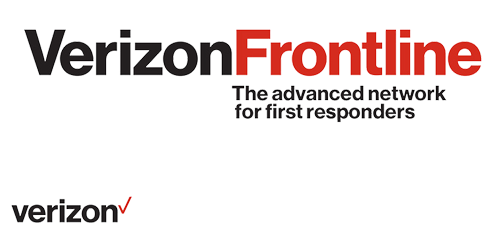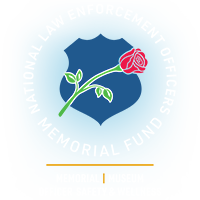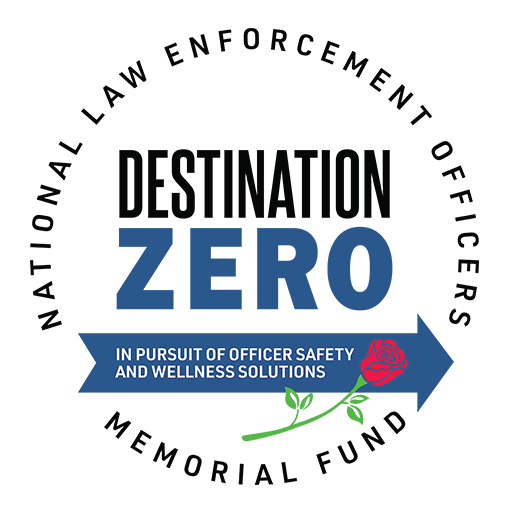About Destination Zero
The Destination Zero Program was created in 2014, when members of the National Law Enforcement Officers Memorial Find (NLEOMF) and the United States Department of Justice’s Bureau of Justice Assistance (BJA) met to discuss ways to improve officer safety and to create a handy resource for agencies to draw from to improve their officers’ safety and overall wellbeing.
The goal of this program is in its name.
To get the number of line-of-duty law enforcement deaths down to the only acceptable number, zero. This award program is also a resource for law enforcement agencies so that they can share their strategies and for other agencies to find solutions. In 2015, the first of the National Officer Safety and Wellness awards were issued in four categories: General Officer Safety, Officer Traffic Safety, Officer Wellness and Comprehensive Safety.
Over the years, the database of submitted safety and wellness programs has grown and is a robust collection of ideas, innovations, and solutions for agency leaders to use to build and improve on their own officer safety and wellness programs.
Each year, the NLEOMF and its distinguished Selection Committee choose the best and most innovative programs in each category to receive the prestigious National Officer Safety and Wellness award. The Destination Zero Program database of ideas and programs has grown over the years and recently expanded the Officer Wellness award category into two separate categories, General Wellness and Comprehensive Wellness.
Each year the submission period ends on February 28th and the review and selection process begins, culminating with an awards reception held in the National Law Enforcement Museum in Washington, D.C., where the winning agencies in each of the categories are personally presented with their award.
Explore the categories listed below and see if you have a program to submit for consideration.
This award will be presented to the law enforcement agency that has implemented a program improving officer safety in the areas of personal protection or tactical training, or has adopted measures that create a safer work environment. The program should definitively demonstrate the ability to increase an officer’s physical safety by reducing job-related injuries, enhancing personal safety, or by providing life-saving training. Likewise, the agency has both developed and actively promoted their officer safety programs and, in doing so, achieved employee buy-in and program acceptance. The agency has successfully achieved its goals to increase safety or reduce injuries or deaths as it continues to set new goals and further enhance officer safety.
The General Officer Safety category includes programs that have made advances in the area of personal protection including increased wearing of body armor or distribution of life-saving tools such as the Downed Officer Kits (DOKs). The General Safety category also includes focus areas such as better tactical training, improving intelligence provided to responding officers or the creation of a dedicated on-scene safety officer.
This award is presented to the law enforcement agency that has taken proactive measures to demonstrate definitively, a program’s success in improving officer traffic-related safety practices. The agency has developed and successfully promoted their officer traffic safety program and, in doing so, achieved employee buy-in and program acceptance. The program has successfully increased officer safety related to traffic and made strides towards reducing traffic-related injuries or deaths while building a culture focused on traffic safety measures.
The Officer Traffic Safety category features programs that have increased officer seatbelt usage, increased the use of visibility gear, or provided enhanced driver’s training. The Officer Traffic Safety category also includes innovations to restrict Mobile Digital Computer (MDC) usages at higher speeds, modifications to interior patrol vehicle design or implemented new safety technologies.
Officer Wellness is the most encompassing category of the four, focusing on topics such as physical fitness, mental health, stress-induced trauma. suicide prevention programs, nutrition, and stress reduction. The category includes both mandatory physical fitness programs and incentive-based initiatives. Officer Wellness is a multi-faceted category that addresses an officer’s overall well-being. This award is presented to the law enforcement agency that has taken innovative measures and definitively demonstrated their ability to increase officer wellness.
The agency has developed a program that has improved their officers’ wellbeing by reducing stress, increasing fitness, or actively promoting a healthier diet and lifestyle. The agency has institutionalized wellness practices that support physical and mental health amongst their employees. The program has become a component of employee development and is an integral part of managing the department’s Human Resources.
This award is presented to the agency that has a program or innovative approach that successfully addressed a specific health issue or improved on the health of their officers in one element of “wellness,” such as improved fitness, or created a successful Peer Support program or improved their officer’s nutrition. This category differs from the Comprehensive Wellness category in that its submissions focused a wellness issue or a few wellness issues, rather than covering multiple wellness issues.
This award recognizes the law enforcement agency that has successfully developed, implemented and promoted the most comprehensive and strategically implemented officer safety or officer wellness program.
The program employs an overarching marketing strategy that embraces voluntary participation and an enhanced departmental awareness, and has achieved a high degree of employee buy-in through its creative and innovative marketing strategies. The program is widely accepted by the employees, has high participation rates, and is considered a success by the agency.
Award Criteria
- Creativity
- Originality
- Process
- Employee buy-in
- Top-down leadership
- Levels of agency participation
- Agency defined success
- History of Program
- Enhancements, modifications
- Marketing to employees
- Design and use of original materials
Destination Zero is made possible by



